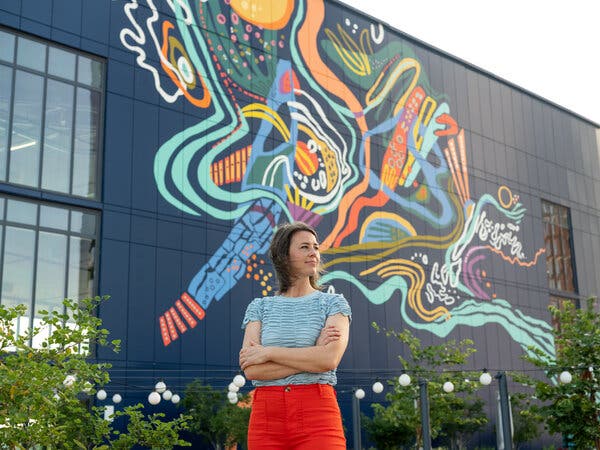On Kilroy Realty’s website, the developer declares that it “has a love affair with great art.”
These days, many builders do.
The 36-story Indeed Tower in downtown Austin, Texas, among Kilroy’s projects, has a suspended sculpture of neon lighting by the Welsh artist Cerith Wyn Evans. The $6 billion Miami Worldcenter, the second-largest urban mixed-used development in the United States behind Hudson Square in New York, has a sprawl of brightly colored artwork and sculptures. At Industry City, a 16-building multipurpose campus in Sunset Park, Brooklyn, a rotating display shows the works of hundreds of creators, including the French designer Camille Walala and the sculptor Dan Lam.
Emily Eisenhart, who has produced murals in San Francisco, Seattle, Nashville, New York and her hometown, Austin, said developers had become her “patrons of the arts.”
“The canvas just happens to be the side of a building,” she said.
Growing interest in public art for private projects is altering the face of city centers across the country. The presence of art in real estate developments “drives traffic and engagement,” provides an amenity for office employees and increases sales for retailers, said Michael Phillips, president of Jamestown, an international real estate firm and creator of the rotating art program that includes the display in Industry City.

Artwork has been integrated into urban development for decades to help stimulate economic recovery, exemplified by the Depression-era pieces of Works Progress Administration artists that are still visible in many buildings. But in more recent years, some builders in states like Florida and California began to pull back when local governments threatened to require them to put a percentage of their development budgets toward art projects, a mandate that landlords said would drive up construction costs.
This post was originally published on this site be sure to check out more of their content







